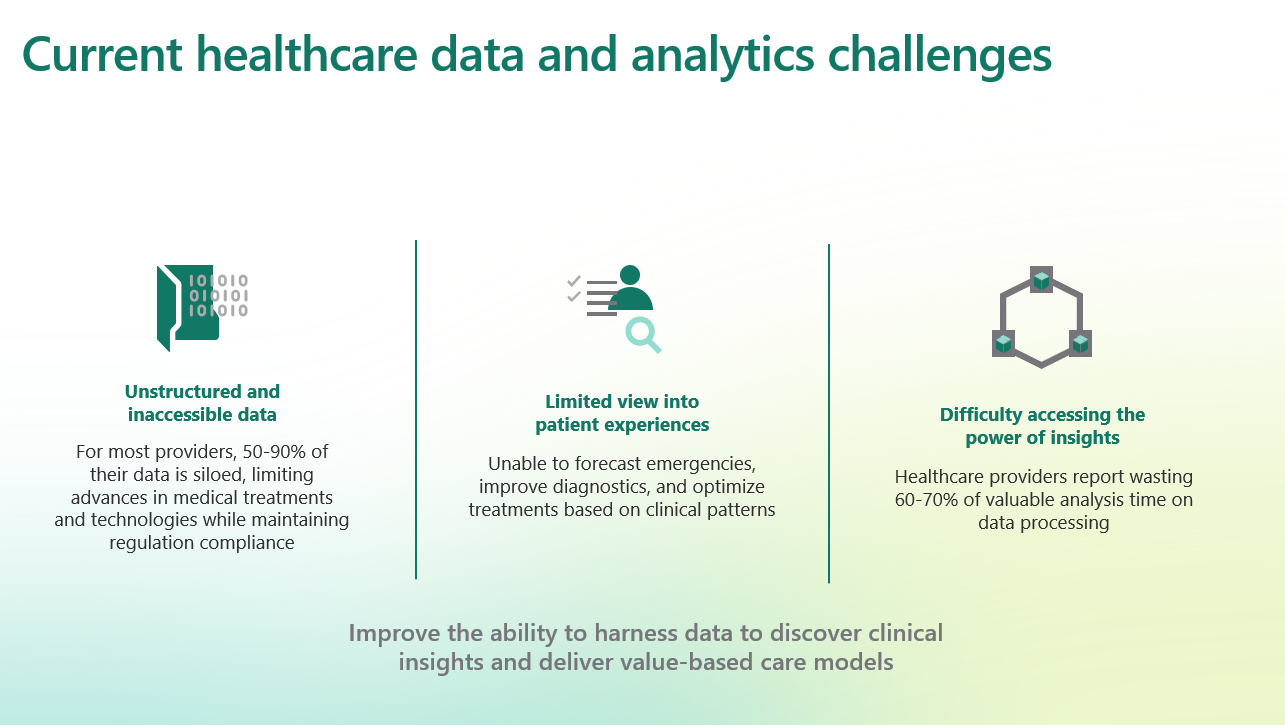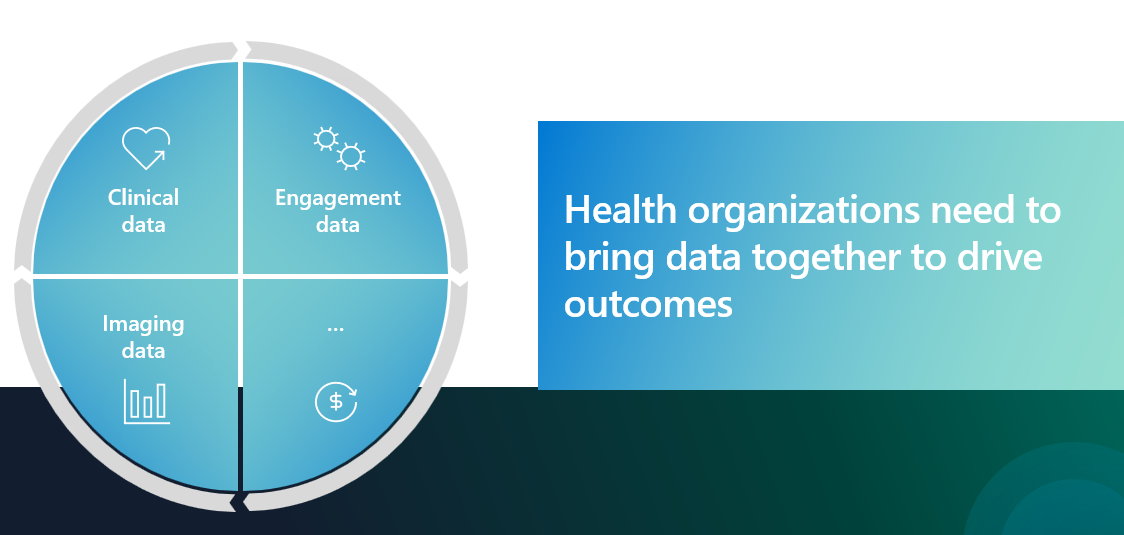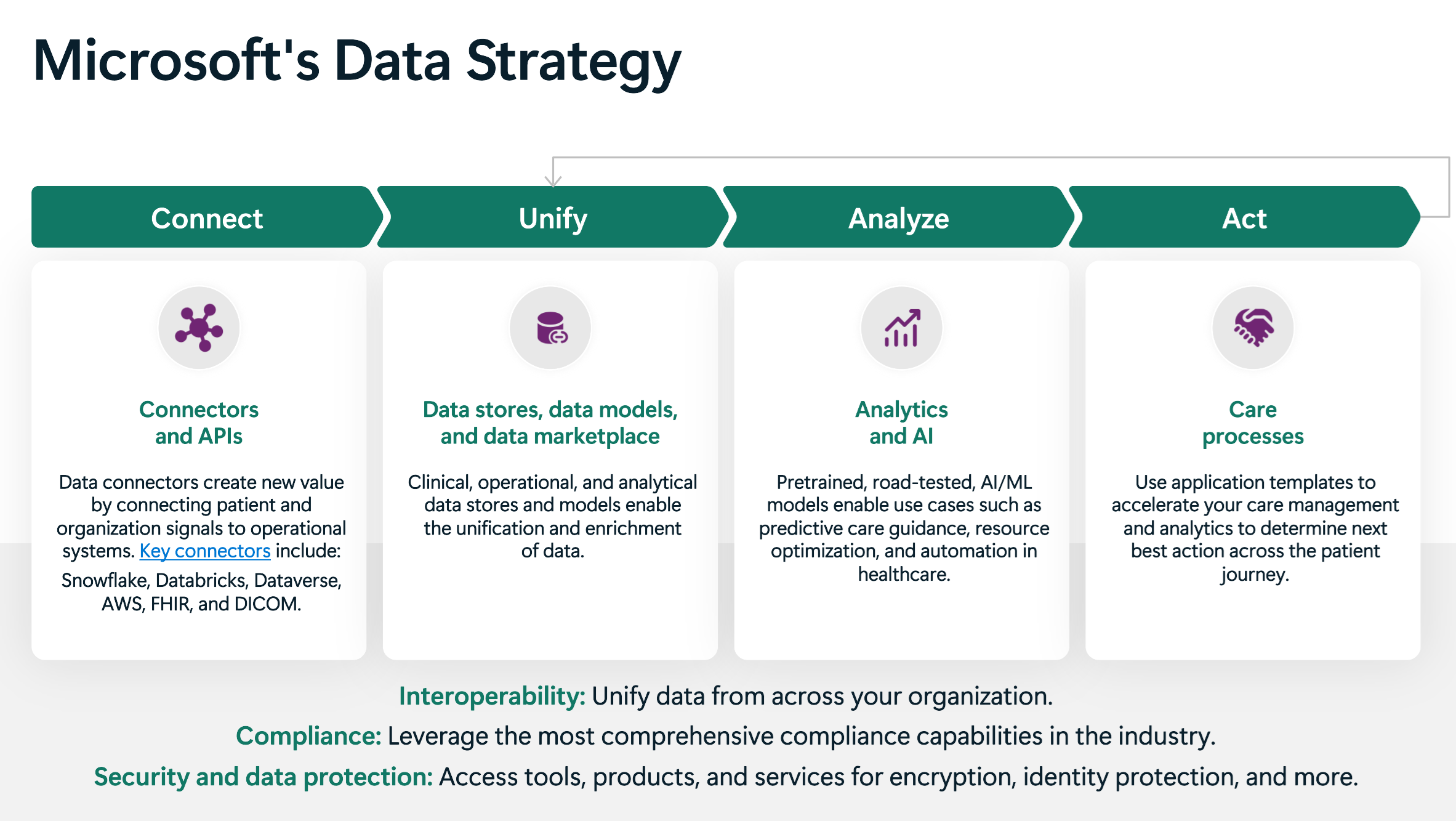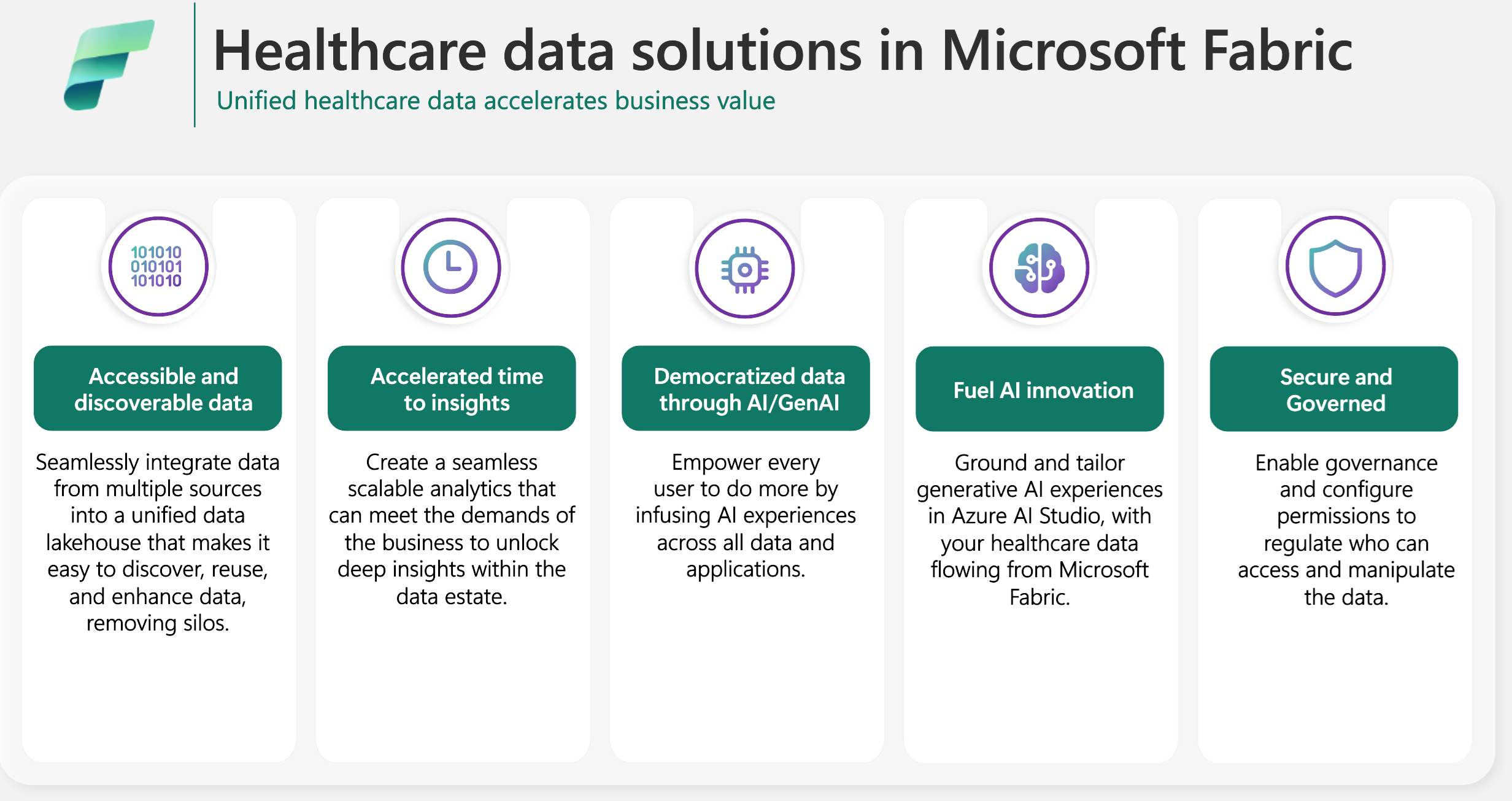Introduction
As organizations examine how to incorporate AI into their processes, data serves as a pivotal force that propels various industries. Healthcare is no exception.
Research suggests that 30% of world data volume is generated by the healthcare industry, whereas around 47% of that volume is underutilized in making clinical and business decisions. Given the current data and analytics ecosystem, organizations are already experiencing a demand for real-time access to large cloud-based data while making sure that sharing this information across teams is more secure.
Federated data, sometimes known as standardized data, is a critical component of creating a centralized Data and Analytics Center of Excellence, which is increasingly becoming a key priority for organizations. Organizations can use a standardized approach for managing data to ensure that their data is consistent, accurate, and reliable. This approach helps organizations analyze and gain insights.
With higher adoption of cloud-based business intelligence and analytics tools, it's imperative that organizations work with a partner that has a trusted portfolio of security products that allow faster, data-driven decisions, in a more secure manner.
Key data and analytics challenges to using AI
Currently, healthcare organizations experience the following challenges with data and analytics:
Unstructured and inaccessible data - For most healthcare providers, a substantial portion of their data, ranging from 50% to 90%, is compartmentalized or siloed. This segregation impedes progress in the development of medical treatments and technologies, concurrently imposing constraints on the providers' ability to adhere to regulatory compliance standards, as per Accenture and HfS Research release.
Limited view into patient experiences - Organizations face the inability to anticipate emergencies, enhance diagnostics, and optimize treatment modalities based on clinical patterns, which persist as a significant limitation.
Difficulty accessing the power of insights - Healthcare providers consistently report wasting a substantial portion of their valuable analysis time, ranging from 60% to 70%, on processing the data.
This information is published by PwC Health Research Institute.
Healthcare organization data
To address these challenges, organizations need to improve their ability to harness data so that they can discover clinical insights and deliver value-based care models. Consolidating the following types of data can help accelerate this objective:
Clinical
Engagement
Imaging
Genomics
Conversational
Claims
Social determinants of health (SDOH)
Microsoft approach for mitigating data challenges
Through the formulation and implementation of an effective data management strategy, healthcare organizations can activate the power of this data to glean invaluable insights into diverse realms, including:
Patient care
Clinical decision making
Research endeavors
Operational efficiency
Microsoft Cloud for Healthcare plays a pivotal role in unlocking distinctive technology considerations that are specific to the healthcare industry. Microsoft Cloud for Healthcare provides complete, enterprise-ready, end-to-end workflows across:
Data and AI workflows (Microsoft Azure data, AI, and machine learning)
Human workflows (Microsoft 365)
Business process workflows (Microsoft Dynamics 365 and Microsoft Power Platform)
These workflows help achieve the following outcomes:
Interoperability - Unify data from across your organization.
Compliance - Use the most comprehensive compliance capabilities in the industry.
Security and data protection - Access tools, products, and services for encryption, identity protection, and more.
Use the following strategic approach to connect, unify, analyze, and take action with your data.
Connect - Use data connectors to create new value by connecting patient and organization signals to operational systems.
Unify - Allow the unification and enrichment of the data by using clinical, operational, and analytical data stores and models.
Analyze - Use pretrained and extensively validated AI/ML models to support use cases, including predictive care guidance, resource optimization, and automation in healthcare.
Act - Use application templates to accelerate clinical and operational analytical use cases, such as care management, patient engagement, and so on. Use the templates to facilitate the determination of the next best action throughout the patient journey.
Healthcare data solutions in Microsoft Fabric
Healthcare data solutions in Microsoft Fabric is an enterprise analytics solution that's built on top of the Microsoft Fabric platform. The solutions are part of Microsoft Cloud for Healthcare, which allows you to break down data silos and harmonize disparate healthcare data in a single, unified store where analytics and AI workloads can operate at scale.
Healthcare data solutions in Microsoft Fabric help you accelerate time-to-value by addressing the critical need to efficiently transform healthcare data into a suitable format for analysis. With these solutions, you can conduct exploratory analysis, run large-scale analytics, and power generative AI with your healthcare data. By using intuitive tools, such as data pipelines and transformations, you can navigate and process complex datasets, overcoming the inherent challenges that are associated with unstructured data formats.
These solutions help you transform unstructured or semi-structured healthcare data into a tabular shape that you can persist in the data lake, ensuring accessibility and usability for continued analysis. By deploying the solutions directly to a Fabric workspace, you can harness the power of autoscaling capabilities that are inherent to built-in, serverless SQL pools, therefore optimizing performance and scalability. This integration allows you to apply the full spectrum of analytical tools in a familiar workspace environment, enhancing productivity and driving informed decision making. With the new features in healthcare data solutions, you can unlock actionable insights from your data, drive innovation, and improve patient outcomes.



